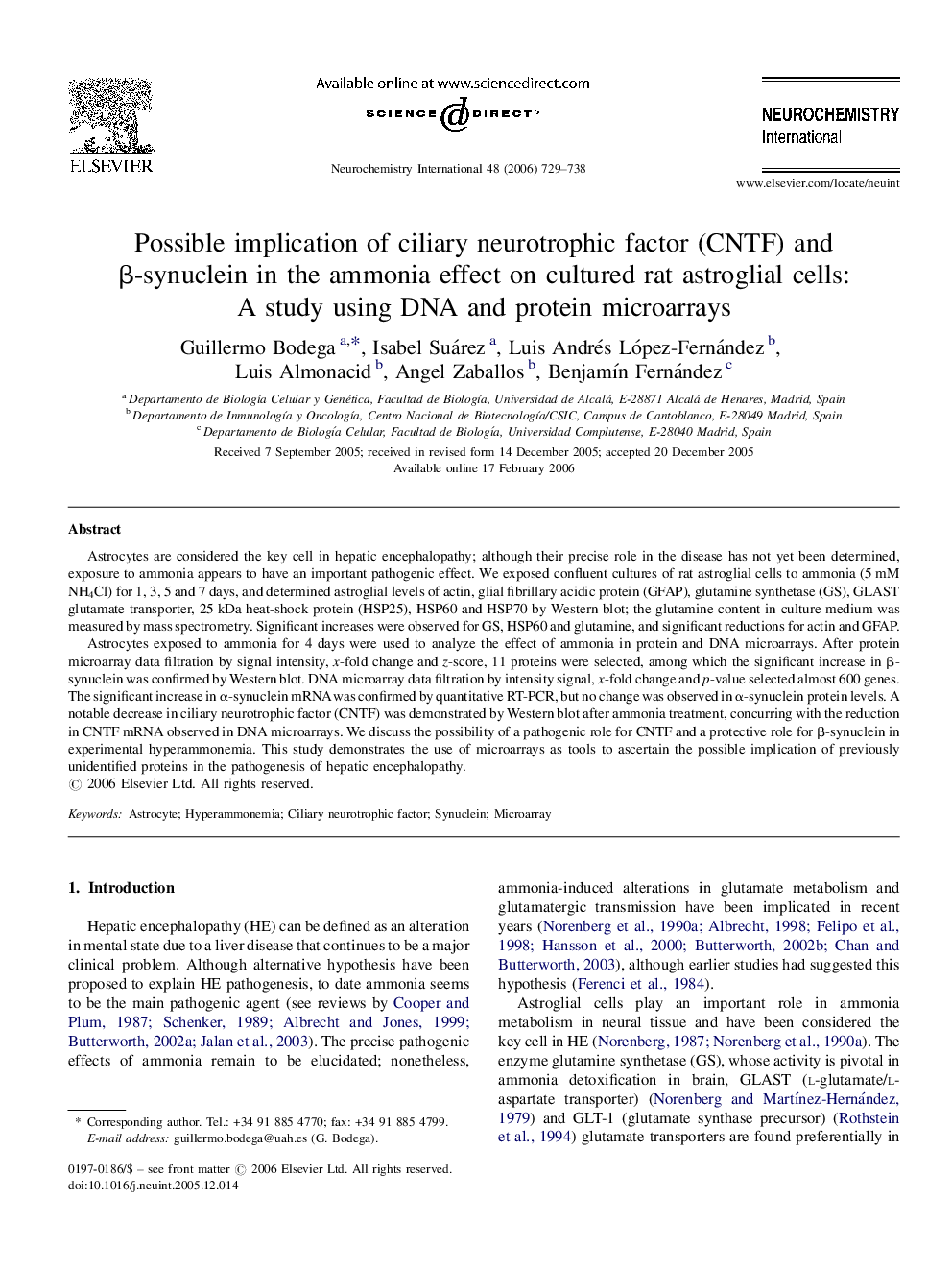| Article ID | Journal | Published Year | Pages | File Type |
|---|---|---|---|---|
| 2202318 | Neurochemistry International | 2006 | 10 Pages |
Astrocytes are considered the key cell in hepatic encephalopathy; although their precise role in the disease has not yet been determined, exposure to ammonia appears to have an important pathogenic effect. We exposed confluent cultures of rat astroglial cells to ammonia (5 mM NH4Cl) for 1, 3, 5 and 7 days, and determined astroglial levels of actin, glial fibrillary acidic protein (GFAP), glutamine synthetase (GS), GLAST glutamate transporter, 25 kDa heat-shock protein (HSP25), HSP60 and HSP70 by Western blot; the glutamine content in culture medium was measured by mass spectrometry. Significant increases were observed for GS, HSP60 and glutamine, and significant reductions for actin and GFAP.Astrocytes exposed to ammonia for 4 days were used to analyze the effect of ammonia in protein and DNA microarrays. After protein microarray data filtration by signal intensity, x-fold change and z-score, 11 proteins were selected, among which the significant increase in β-synuclein was confirmed by Western blot. DNA microarray data filtration by intensity signal, x-fold change and p-value selected almost 600 genes. The significant increase in α-synuclein mRNA was confirmed by quantitative RT-PCR, but no change was observed in α-synuclein protein levels. A notable decrease in ciliary neurotrophic factor (CNTF) was demonstrated by Western blot after ammonia treatment, concurring with the reduction in CNTF mRNA observed in DNA microarrays. We discuss the possibility of a pathogenic role for CNTF and a protective role for β-synuclein in experimental hyperammonemia. This study demonstrates the use of microarrays as tools to ascertain the possible implication of previously unidentified proteins in the pathogenesis of hepatic encephalopathy.
